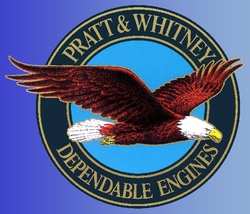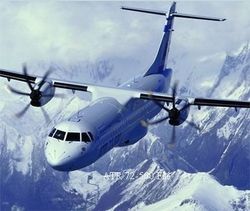Fri, Oct 28, 2022
Dependable Engines Indeed
The regional turboprop is an enigmatic machine—at once underappreciated and indispensable. Passengers balk at the sight of propellers, but persons versed in the dark arts of mechanical and aeronautical engineering know the turboprop design is the most efficient and reliable means by which to convert the chemical energy of Jet-A to the kinetic energy of thrust.

Of the world’s manufacturers of turboprop engines, none boasts a more storied history and demonstrably robust lineup of powerplants than Pratt & Whitney Canada. From the 650 to 2,000-shaft-horsepower PT6 series engines by which the world’s King Air fleet has moved resolutely through nearly six-decades, to the 1,800 to 5,000-shaft-horsepower PW150A mills slung under the slender, high-efficiency wings of Bombardier’s Dash 8 Q400—no aerospace engine concern has powered a wider variety of turboprop aircraft or borne more souls safely across the Earth’s skies than Pratt and Whitney.
On 13 October 2022, the European Aviation Safety Agency (EASA) type-certified Pratt & Whitney Canada’s new PW127XT-M engine for use on ATR’s popular 42 and 72 series regional turboprop aircraft. Boasting advanced materials and technologies, the new engine series affords operators of ATR’s 42 and 72 aircraft families three-percent improvement in fuel-efficiency, twenty-percent reduction in maintenance costs and forty-percent extended time on wing—with engine overhaul intervals scheduled at twenty-thousand-hours.
ATR senior vice president engineering Stephane Viala states: “Receiving EASA type certification is an important step towards entry into service of this new standard engine on our ATR aircraft. ATR teams have been working with our partners at Pratt & Whitney Canada and the authorities to secure certification and move closer to providing customers with even more economical and sustainable powered regional turboprop aircraft.”

Pratt & Whitney Canada vice president sales and marketing Anthony Rossi adds: “The certification of ATR aircraft powered by our PW127XT-M engine is good news for the regional aviation segment as it delivers forty-percent more time on wing, twenty-percent less maintenance costs, and a three-percent improvement in fuel consumption compared to the PW127-M. ATR and P&WC have worked diligently to achieve this certification less than a year after the game-changing engine was unveiled. We congratulate ATR on this important milestone.”
EASA certification of the PW127XT-M-powered ATR 42 and 72 follows certification of the new engine—granted by Transport Canada and EASA in August and September 2022 respectively.
Unveiled at 2021’s Dubai Airshow, the purpose-built PW127XT-M engine will enter into service with launch customer Air Corsica prior to year’s end 2022.
More News
“These new aircraft strengthen our ability to respond quickly, train effectively and support communities nationwide. Textron Aviation has been a steadfast supporter in helpin>[...]
From 2011 (YouTube Edition): Rugged, Legendary, STOL Twin Makes A Comeback The de Havilland Twin Otter is an airplane with a long history, and it gained a reputation as a workhorse>[...]
A Wind Gust Lifted The Right Wing And The Airplane Turned To The Left Analysis: The pilot was departing from a 2,395-ft-long by 50-ft-wide turf runway. The pilot reported that afte>[...]
Have A Story That NEEDS To Be Featured On Aero-News? Here’s How To Submit A Story To Our Team Some of the greatest new stories ANN has ever covered have been submitted by our>[...]
Braking Action Advisories When tower controllers receive runway braking action reports which include the terms “medium," “poor," or “nil," or whenever weather con>[...]
 Aero-News: Quote of the Day (12.18.25)
Aero-News: Quote of the Day (12.18.25) Classic Aero-TV: Viking Twin Otter 400--Bringing the DHC-6 Back Into Production
Classic Aero-TV: Viking Twin Otter 400--Bringing the DHC-6 Back Into Production NTSB Final Report: Rans Employee Flying Club Rans S-6ES Coyote II
NTSB Final Report: Rans Employee Flying Club Rans S-6ES Coyote II ANN FAQ: Submit a News Story!
ANN FAQ: Submit a News Story! ANN's Daily Aero-Term (12.18.25): Braking Action Advisories
ANN's Daily Aero-Term (12.18.25): Braking Action Advisories




